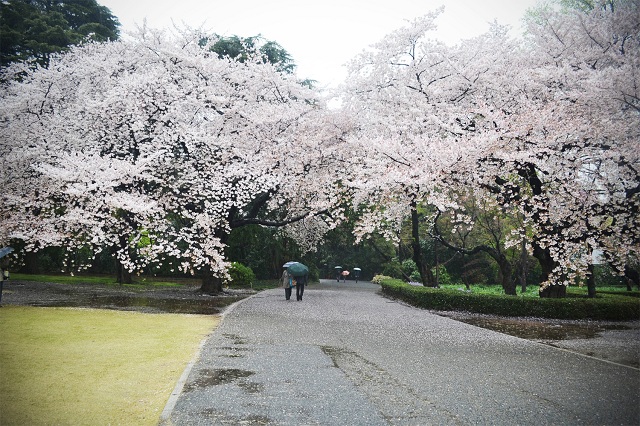Understanding ‘hanami’: An appreciation of Japan’s cherry blossoms
By the time I reached the gates of the 58-hectare Shinjuku Gyoen National Garden in Tokyo, I’d already seen so many sakura (cherry blossoms) in bloom that I didn’t think I’d find anything noteworthy anymore.
This was proven wrong five minutes into my walk, while I nervously stood in the middle of the vast, jaw-dropping scenery, confused with the sudden palpitations. I unexpectedly became conscious of the fact that should have registered in my head earlier but didn’t: I flew thousands of miles to see flowers.
You see, I don’t even like flowers.

Hanami
In his Catalonia International Prize Acceptance speech, Japanese author Haruki Murakami discussed the Japanese word "mujo," which expresses the fact that nothing is permanent; that everything changes and comes to an end. One of his examples was the sakura and how the Japanese would travel across the country to see it—this is “hanami,” the Japanese custom of viewing cherry and plum blossoms.
Murakami explains that the Japanese actually "find peace when beauty has reached its pinnacle and begins to fade." He says that there is a sense of relief to see how the leaves of the sakura fall; that the idea of mujo signifies a kind of beautiful resignation before this world.
To me, this embrace of transience, this acceptance of the power of nature, is difficult. It’s almost terrifying. But walking alone one afternoon in that Shinjuku Garden, I saw what Murakami was talking about. Now I know why people patiently wait for it year after year, and I finally came to terms with a sound explanation for why I traveled this far for them: Seeing beauty, expecting death.
When I returned to Manila, I only had one reply to questions of how my trip went: absolutely, ridiculously beautiful, and you simply have to go.
Why you should go
“I give up,” my friend said while taking pictures of the trees, yielding to the fact that we were not going to do the landscape any justice in photographs. This is true, I thought. This is one of the hardest things about telling stories of beautiful places.
Our Japan trip started off in Arashiyama, a charming district in the western outskirts of Kyoto.
Because it’s sakura season, the place was a bit crowded, and things were a bit more pricey. The views of Mount Arashi from the Togetsukyo bridge across the river, however, was priceless—it was absolutely breathtaking, more so if you’ll be up for a 30-minute hike to hang with monkeys and get a panoramic view of Kyoto at the Iwatayama Monkey Park. The bamboo forest was beautiful as well, but taking pictures that look like the images (those with no crowds) you see online could be quite challenging at this time of year.
Because Kyoto is one of the most well-known places for hanami, the only problem you’ll have is determining which path you want to take. The place is dotted with temples, and the long, narrow streets are a joy to walk on during Spring. We decided to go to Eastern Kyoto next, home to the famous Philosopher’s Path (after Japanese philosopher Nishida Kitaro, who regularly walked the path on his way to Kyoto University) and the Ginkakuji Temple, a World Heritage site.
It looked like there were more local tourists than foreigners, and one of the things that sets Kyoto apart from any touristy place I’ve been to is that despite the thick crowds, there is always peace. It was packed but not noisy; busy but not stressful.
A bullet train ride to Tokyo was next, taking us to Shinjuku Gyoen National Garden—hands down, the best place I’ve seen in the country. One could easily spend a whole day walking around it.

Summer
The beauty I saw in Japan wasn’t just about flowers, but also the people and their small acts of kindness like giving you a free ¥2,000 (roughly P900) ticket even though it’s your fault, the delicious food that feels as though they were meant to repair what junk food have done to you, the cute and the weird in places like Harajuku, the magic that is Hayao Miyazaki’s world, and so on.
I’m still not a big fan of flowers but a change of heart is not far-fetched. Mujo is not an illusion, and it’s something that I know I’ll fully come to terms with one day. Until then I keep repeating it to myself, like a prayer.
By now the sakura will have fallen as summer enters, but I know they won’t be gone for long. — BM, GMA News



